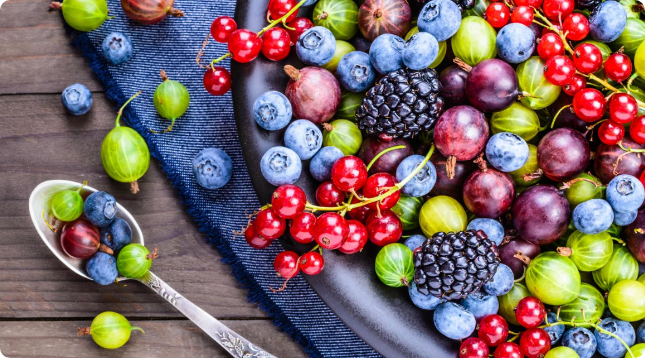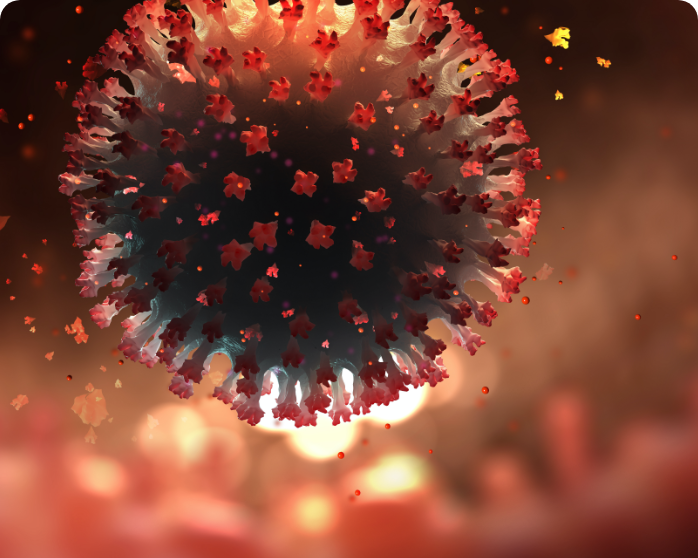“And while we can take certain precautions—washing our hands, getting vaccinated, and getting enough sleep—we should also actively support our immune health by ingesting the right vitamins and minerals.”

Urijah Faber said, “good health is true wealth,” and nothing could be more true. Health is the greatest wealth—especially during the sick or flu season. And while we can take certain precautions—washing our hands, getting vaccinated, and getting enough sleep—we should also actively support our immune health by ingesting the right vitamins and minerals.
Probiotics and Prebiotics
The body’s large collection of bacteria is called the microbiome. An unbalanced microbiome can result in infection, poor gut health, and a weakened immune system. Probiotics are the body’s tiny warriors that defend the microbiome—they are the good bacteria that support other good bacteria and fight the bad. Probiotics can be found in foods like sauerkraut, yogurt, and kimchi.
Prebiotics are the food for the probiotic warriors; the prebiotics fuel and strengthen the good bacteria. Prebiotics are found in foods like bananas, greens, onions, and artichokes.
While it’s good to get prebiotics and probiotics from food, food doesn’t always contain the right amount or the types our bodies need. Using probiotic and prebiotic supplements can be a great way to access the right probiotics and prebiotics.
Prebiotics can be found in LiFiber, ProBionic, ProBionic Plus, Bios 7, Immunizen, and Hawaiian Noni. Probiotics are found in ProBionic and ProBionic Plus.
Green Tea Catechins
Did someone say “tea time”? Not only can green tea create a natural energy boost—it can also boost immune health!
Green tea catechins contain natural antioxidants that protect the body from oxidative stress—an imbalance of free radicals and antioxidants. Catechins can also boost the immune system: epidemiologic studies have found that those who consume green tea typically have lower rates of contracting influenza.
And if you’re wanting an extra health boost, the epigallocatechin-3-gallate (ECGC) content—a powerful antioxidant—is three times higher in dry matcha leaves than regular tea leaves. So let’s drink up some Unicity Matcha or any of the products below!
Green tea catechins are found in Unicity Matcha Energy, Bios Life E, Unicity Matcha Focus, XXtra Power Generation, Liver Essentials, LC Ascent, and Core Health.
Zinc
After iron, zinc is the most present mineral found in the body, and it operates as one of the body’s key building blocks. Zinc is critical to the healthy development and function of immune cells, and it has been proven to decrease the duration of the common cold. The mineral can also aid in protein synthesis, healing wounds, normal growth and development, and possibly slowing age-related macular degeneration.
The body has no specialized system for storing zinc, so it must be consumed regularly. Below are some of the products that contain the vital mineral.
Zinc is found in many Unicity products such as Core Health, Quadplex, Complete, Balance, Cardio Basics, Vision Essentials, Bone Mate Plus, Vegan Complete, Neigene Collagen, Hawaiian Noni, and many others.
Vitamin C
Whenever the common cold strikes, the most frequently suggested antidote is vitamin C. Vitamin C is an essential tool in the immune health arsenal, and it supports immune defense by aiding cellular function.
But before we begin gulping down orange juice, it’s important to note that different sources of vitamin C are broken down and absorbed by the body at different rates: Ascorbyl Palmitate, Ascorbic Acid, Calcium Ascorbate, and Magnesium Ascorbate are each used at different rates. So to have a steady supply of vitamin C circulating throughout our bodies, it’s important to use a variety of sources.
Vitamin C can be found in Bio C, Vitamin B Complex with Vitamin C, Core Health, Bios Life C, and Cellular Essentials Kit (Cardio-Basics and Bio-C).
Echinacea
Echinacea, better known as the purple coneflower, is a flowering plant in the daisy family. It was long used, and is still used, as a remedy by the Plains Indians to aid sore throats, colds, coughs, and snake bite.
It is one of the plant types most well-known for supporting a healthy immune response, and it has been clinically proven to reduce the length and frequency of sickness as well as the severity of symptoms. Similar to green tea, echinacea also contains anti-inflammatory properties and antioxidants that fight oxidative stress.
Instead of picking flowers to brighten your home, use them to enhance your immune system. Echinacea can be found in SIG and Red Clover.

Let’s take our immune health into our own hands by consuming essential vitamins and minerals that boost our immune system!
PLEASE NOTE: Make sure to consult your doctor before taking any dietary supplements.
- “Probiotics and prebiotics: What you should know – Mayo Clinic.” 28 Jun. 2018, https://www.mayoclinic.org/healthy-lifestyle/consumer-health/expert-answers/probiotics/faq-20058065. Accessed 12 Mar. 2020.
- “Green Tea Catechins – Today’s Dietitian Magazine.” https://www.todaysdietitian.com/newarchives/0819p18.shtml. Accessed 12 Mar. 2020.
- “Iron and Zinc Nutrition in the Economically-Developed … – NCBI.” 13 Aug. 2013, https://www.ncbi.nlm.nih.gov/pmc/articles/PMC3775249/. Accessed 12 Mar. 2020.
- “Zinc in Human Health: Effect of Zinc on Immune … – NCBI – NIH.” 3 Apr. 2008, https://www.ncbi.nlm.nih.gov/pmc/articles/PMC2277319/. Accessed 12 Mar. 2020.
- “Zinc — Health Professional Fact Sheet.” 6 Mar. 2020, https://ods.od.nih.gov/factsheets/Zinc-HealthProfessional/. Accessed 13 Mar. 2020.
- “Zinc – Mayo Clinic.” 24 Oct. 2017, https://www.mayoclinic.org/drugs-supplements-zinc/art-20366112. Accessed 12 Mar. 2020.
- “Zinc — Health Professional Fact Sheet.” 6 Mar. 2020, https://ods.od.nih.gov/factsheets/Zinc-HealthProfessional/. Accessed 13 Mar. 2020.
- “Vitamin C and Immune Function. – NCBI.” 3 Nov. 2017, https://www.ncbi.nlm.nih.gov/pubmed/29099763. Accessed 12 Mar. 2020.
- “eastern purple coneflower – USDA Plants.” https://plants.usda.gov/plantguide/pdf/cs_ecpu.pdf. Accessed 13 Mar. 2020.

